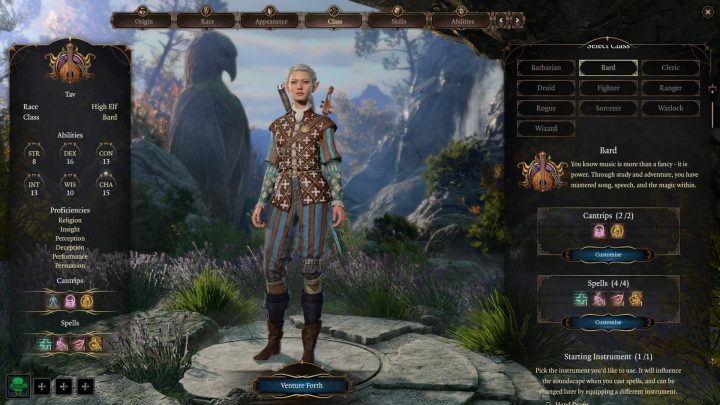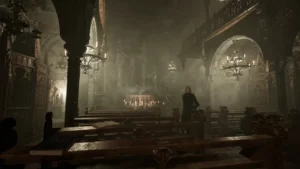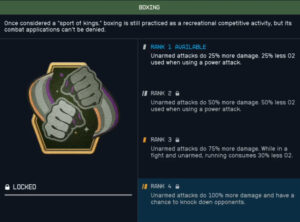Selecting the class that most closely resembles your playing style is crucial while playing a game like Baldur’s Gate 3. For example, you might discover that you utilize some talents more frequently than others or that some races are more related to certain classes than others. After our examination of the Barbarian class, we have chosen to provide you with a general overview of the Bard class in this article so that you are aware of its unique characteristics in Baldur’s Gate 3.
The Bard class overview
The Bard class appears in Baldur’s Gate 3 as one of the twelve classes available. Charisma is a bard’s strongest skill, while Dexterity and Charisma are their best saving throw abilities. They also have a 1d8 Hit Dice. Longswords, simple weapons, rapiers, shortswords, hand crossbows, longbows, and light armor are things that they are skilled with.
Bards are aware that music has power and is not just a fancy. Bards have mastered song, communication, and the magic within through study and exploration. This class is perfect for someone who prefers a light approach to the game and doesn’t want a class that it’s all fighting skills.
The Bard class features
In order to provide you a better understanding of the Baldur’s Gate 3 Bard class and all the features it offers, we have created a list of every feature you will have access to if you choose to start your Baldur’s Gate 3 adventure as a member of The Bard class.
- Select Instrument: Select the instrument you want to use as your starting point. When you cast spells, it will affect the soundscape, but you can later adjust it by using a different instrument.
- Unlocked Level 1 Spell Slots
- Proficiency Bonus for Dexterity Saving Throws: Dexterity saving throws now include your proficiency bonus.
- Proficiency Bonus for Charisma Saving Throws: Increase the effectiveness of your Charisma saving throws.
- Proficiency with Light Armor: Wearing light armor won’t make your strikes less effective or prohibit you from performing spells.
- Simple Weapon Proficiency: When making attacks with simple weapons, add your proficiency bonus.
- Proficiency with Hand Crossbows: When using Hand Crossbows, add your Proficiency Bonus to Attack Rolls.
- Longsword Proficiency: When making attack rolls with longswords, add your proficiency bonus.
- Rapier Proficiency: When using rapiers, add your proficiency bonus to your attack rolls.
- Shortsword Proficiency: When making attack rolls with shortswords, add your proficiency bonus.
- Musical Instrument Knowledge: You are proficient in playing a range of instruments and can use them to amuse a crowd.


The Bard subclasses
In Baldur’s Gate 3, users can choose one of The Bard’s three subclasses. Subclasses are variations on the primary class that let players acquire skills and traits unique to that subclass while still enjoying the advantages of their parent class, even if they choose to pursue a different path. The following subclasses are open to the Bard:
- College of Lore
- Add Arcana, Intimidation, and Sleight of Hand proficiency to your list of skills.
- Cutting Words: To demoralize a beast, use your cunning to divert its attention. It is subject to a 1d6 penalty on Attack Rolls, Ability Checks, and damage until the beginning of your next turn. Cutting words result in a +1d8 penalty at Bard Level 5. At Bard Level 10, the penalty for cutting words rises to +1d10.
- College of Valour
- Proficiency with Medium Armor: Medium Armor will not cause you to roll at a disadvantage or hinder you from casting spells.
- Proficiency with a shield: Using a shield won’t cause you to roll at a disadvantage or stop you from performing spells.
- Proficiency with Martial Weapons: When rolling attacks with martial weapons, add your proficiency bonus.
- College of Swords
- Bonus Proficiencies: You become proficient with medium armor and the scimitar when you enroll in the College of Swords at level 3.
- Fighting Style: At level 3, you choose a specific fighting style to specialize in. Select one of the following possibilities: Dueling or two-handed combat. Even if you subsequently receive the chance to choose again, you can only select one Fighting Style option at a time.
- Blade Flourish: At level 3, you have the ability to put on spectacular displays of speed and strength in combat. Every time you perform the Attack action during your turn, you can choose one of the following Blade Flourish possibilities if a weapon attack you make as part of this action hits a creature. Additionally, your walking speed is increased by 10 feet until the end of the turn. Each turn, you may only select one Blade Flourish option.
- Extra Attack: At level 6 and higher, whenever you perform the Attack action during your turn, you may attack twice rather than once.
- SEO Powered Content & PR Distribution. Get Amplified Today.
- PlatoData.Network Vertical Generative Ai. Empower Yourself. Access Here.
- PlatoAiStream. Web3 Intelligence. Knowledge Amplified. Access Here.
- PlatoESG. Automotive / EVs, Carbon, CleanTech, Energy, Environment, Solar, Waste Management. Access Here.
- BlockOffsets. Modernizing Environmental Offset Ownership. Access Here.
- Source: https://estnn.com/baldurs-gate-3-classes-the-bard-class-and-subclasses/
- :has
- :is
- :not
- 1
- 10
- a
- abilities
- ability
- access
- acquire
- Action
- add
- Additionally
- advantages
- Adventure
- affect
- After
- again
- All
- also
- and
- approach
- ARE
- article
- AS
- At
- attack
- Attacks
- attention
- available
- aware
- become
- Beginning
- BEST
- Better
- BLADE
- Bonus
- but
- by
- CAN
- Cause
- certain
- Chance
- characteristics
- Checks
- Choose
- chosen
- class
- classes
- closely
- College
- combat
- Communication
- created
- creature
- crowd
- crucial
- cutting
- damage
- different
- Disadvantage
- discover
- displays
- doesn
- during
- each
- Effective
- effectiveness
- end
- Even
- Every
- examination
- example
- exploration
- Feature
- Features
- Feet
- fighting
- flourish
- following
- For
- frequently
- from
- game
- General
- guide
- hand
- Have
- higher
- hinder
- Hit
- Hits
- HTTPS
- if
- in
- include
- Increase
- increased
- instrument
- instruments
- IT
- ITS
- just
- knowledge
- later
- less
- Level
- light
- like
- List
- magic
- make
- Making
- May..
- medium
- member
- might
- more
- most
- Music
- next
- now
- of
- Offers
- on
- once
- ONE
- only
- open
- Option
- or
- order
- Others
- our
- overview
- part
- path
- perfect
- perform
- performing
- plato
- Plato Data Intelligence
- PlatoData
- players
- playing
- Point
- possibilities
- power
- primary
- prohibit
- provide
- pursue
- put
- range
- rather
- receive
- related
- resembles
- result
- Rises
- Roll
- Rolling
- rolls
- s
- saving
- Shield
- Simple
- skill
- skilled
- skills
- So
- some
- Someone
- song
- specialize
- specific
- spectacular
- speed
- SPELL
- start
- Starting
- Still
- Stop
- strength
- Strikes
- Study
- style
- subject
- Subsequently
- talents
- than
- that
- The
- their
- Them
- they
- things
- this
- three
- Through
- time
- to
- TURN
- Twice
- understanding
- unique
- until
- use
- users
- using
- utilize
- Valour
- walking
- want
- we
- Weapons
- when
- whenever
- while
- WHO
- will
- with
- within
- Won
- words
- you
- Your
- zephyrnet











